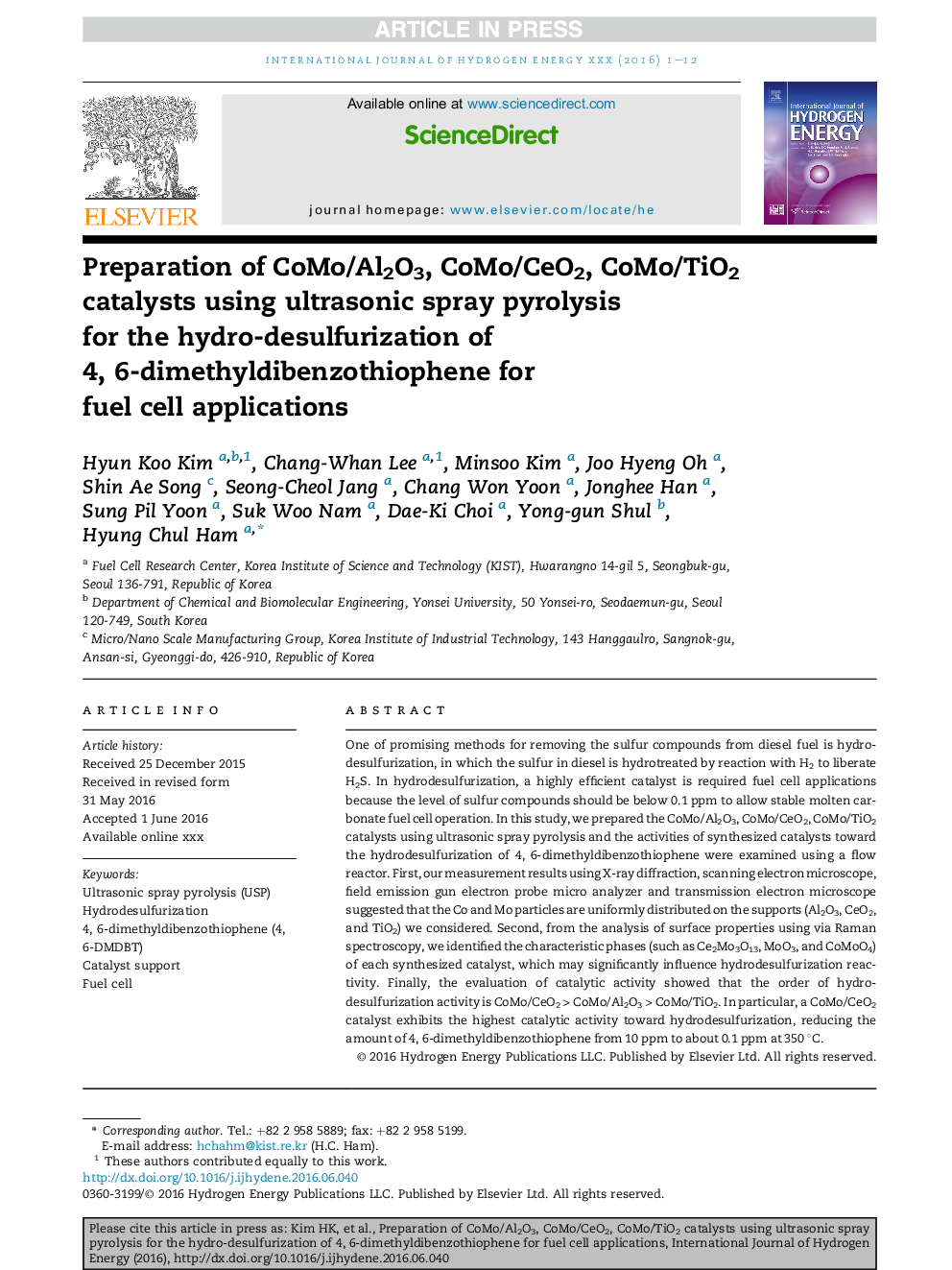| Article ID | Journal | Published Year | Pages | File Type |
|---|---|---|---|---|
| 5147434 | International Journal of Hydrogen Energy | 2016 | 12 Pages |
Abstract
One of promising methods for removing the sulfur compounds from diesel fuel is hydrodesulfurization, in which the sulfur in diesel is hydrotreated by reaction with H2 to liberate H2S. In hydrodesulfurization, a highly efficient catalyst is required fuel cell applications because the level of sulfur compounds should be below 0.1 ppm to allow stable molten carbonate fuel cell operation. In this study, we prepared the CoMo/Al2O3, CoMo/CeO2, CoMo/TiO2 catalysts using ultrasonic spray pyrolysis and the activities of synthesized catalysts toward the hydrodesulfurization of 4, 6-dimethyldibenzothiophene were examined using a flow reactor. First, our measurement results using X-ray diffraction, scanning electron microscope, field emission gun electron probe micro analyzer and transmission electron microscope suggested that the Co and Mo particles are uniformly distributed on the supports (Al2O3, CeO2, and TiO2) we considered. Second, from the analysis of surface properties using via Raman spectroscopy, we identified the characteristic phases (such as Ce2Mo3O13, MoO3, and CoMoO4) of each synthesized catalyst, which may significantly influence hydrodesulfurization reactivity. Finally, the evaluation of catalytic activity showed that the order of hydrodesulfurization activity is CoMo/CeO2 > CoMo/Al2O3 > CoMo/TiO2. In particular, a CoMo/CeO2 catalyst exhibits the highest catalytic activity toward hydrodesulfurization, reducing the amount of 4, 6-dimethyldibenzothiophene from 10 ppm to about 0.1 ppm at 350 °C.
Related Topics
Physical Sciences and Engineering
Chemistry
Electrochemistry
Authors
Hyun Koo Kim, Chang-Whan Lee, Minsoo Kim, Joo Hyeng Oh, Shin Ae Song, Seong-Cheol Jang, Chang Won Yoon, Jonghee Han, Sung Pil Yoon, Suk Woo Nam, Dae-Ki Choi, Yong-gun Shul, Hyung Chul Ham,
